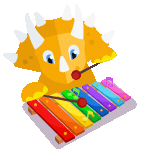Haiti’s Brave Words: What Creole Means to the People
Haitian Creole isn’t just a way to talk it’s a symbol of strength, identity, and hope. For kids learning the language, it’s important to know how deeply it matters to the people who speak it.
A Language of Freedom
Haitian Creole was born from resistance. During the fight for independence, enslaved Africans in Haiti used Creole to speak to one another. It became the voice of a revolution—the first Black republic in the world.
While French remained the official language for years, Creole was what people spoke at home, in the streets, and in everyday life. It united them.
Pride in Every Word
Today, Haitian Creole represents pride. It’s the language of storytelling, singing, praying, and joking. Families pass it down to their children as a reminder of who they are and where they come from.
When kids learn Haitian Creole, they’re not just learning a language they’re joining in a history of bravery and belonging.
Hands-On Activities
Creole Courage Poster
Invite your child to draw or collage a poster that includes Creole words like libète (freedom), fanmi (family), and fò (strong).
Hero Storytime
Tell or read a short version of Haiti’s independence story. Highlight how Creole helped bring people together.
Learning Creole with Purpose
With Dinolingo, children ages 2–14 can learn Haitian Creole through music, games, and interactive videos—while also understanding the rich culture it represents. The platform works on web, iOS, and Android, and supports offline learning too.
Every new word is a step into a world of courage, connection, and celebration.
Source:
Start Learning a New Language Today!
Best Language App for Kids.
7-day free trial. Then only $19/month. Cancel anytime.
